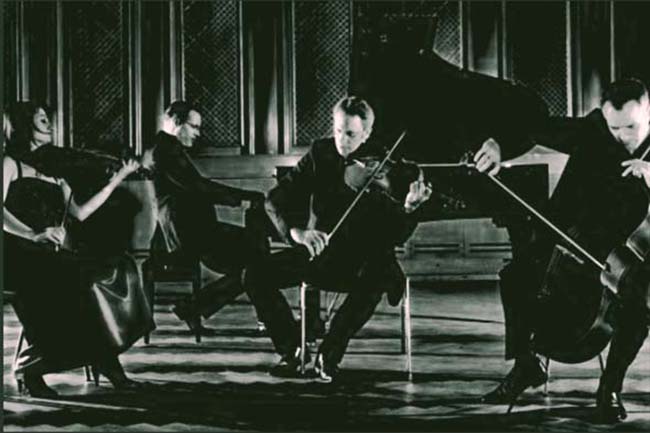 February 28, 2013. Jane Mallett Theatre, Toronto.
February 28, 2013. Jane Mallett Theatre, Toronto.
The piano quartet is a rare configuration. The literature for it is lovely but limitied to a few composers, mostly concentrated in the 19th Century. A-list composers Beethoven, Mendelssohn and Brahms each wrote three piano quartets; Mozart, Dvorak and Fauré wrote two; Schubert and Schumann, Mahler and tonight’s composer Richard Strauss, wrote one each. Usually we hear these works played by a string trio plus piano, or by a quartet minus one violin plus piano. The Fauré Piano Quartett is dedicated to the form and bring to their performances a rare confidence that is immediately apparent.
Richard Strauss was brought up in a musical family and educated to model his music on Mozart and Mendelssohn. At 19, he found Brahms, who inspired Strauss to try his hand at the piano quartet. Being something of a wunderkind, Strauss’ Piano Quartet in C Minor, Op. 13, was premiered at the Meiningen court in 1886. It was published immediately, and the next year took first prize in the chamber music competition of the Tonkunstler-Verein in Berlin. Although Strauss soon abandoned chamber music when found his true voice writing for the lyric stage and in richly instrumented orchestral tone poems, he continued to tour with his Piano Quartet until 1921.
The Fauré Quartett’s lovely intonation resounds through the Allegro’s mellow opening. The first theme bursts energetically into a swaying harmonic line before lapsing into a second lyrical melody taken alternately by the piano and string ensemble. The hallmark of this movement is its frequent and abrupt alternation of boisterous and tranquil moods that some writers have described, justly I think, as the dialogue within Strauss of the Brahms-in-him, and his own emerging musical voice with its penchant for colour and drama. Overall, I found the Fauré’s treatment of this movement a bit rich and Rachmaninovian, verging on the sentimental, especially in the piano, a feeling that ceased only as they built towards the dark, symphonic conclusion.
Dirk Mommertz’s piano led the Scherzo through some beautifully flexible bars. The characteristic alternation of staccato and legato moods prevails, relieved by the flowing trio section, and followed by a prestissimo repetition of the opening materials. The Andante has the strings singing above a tearful melody taken sometimes solo by the piano that is profoundly affecting. The Finale (Vivace) is fiery, syncopated and edgy, marked by Konstantin Heidrich’s expressive cello-work. The Quartett weave together a dramatic tapestry of emotional themes from all three previous movements that points away from Brahms and chamber music, in the direction of Strauss’ future as a musical storyteller.
Strauss earned the Fauré Piano Quartett a warm welcome to Toronto. After intermission they amped up their virtuosity in a rococco rendition of Mussorgsky’s Pictures at an Exhibition (1874) that brought the audience to its feet. The Grigory Guzman arrangement for piano quartet (1956) has bizzare dissonances, gritty harmonies, slow-dripping piano solos, orientalisms, and odd effects ranging from the creepy to the sweepy, from hypnotic to crazy, hollow, twittering whistling sul ponticello extended string techniques. Where Ravel’s popular 1924 orchestral arrangement put the original piano score of Mussorgsky’s tone poem from the recital to the concert stage, Guzman’s arrangement played by the Fauré Quartett took it to the level of a 3D Cinerama drama.
I was happier when the Quartett’s gracious encore brought the evening back to ground with the lovely Andante from the Op. 47 Piano Quartet by Robert Schumann.
